Flathead National Forest
- February 14, 2024
- 0 comment
Discover Flathead National Forest, a haven of diverse wildlife, stunning landscapes, and endless adventure for nature’s untouched beauty. Located in Montana, Flathead National Forest stands as a testament to the wild, untamed beauty of the natural world. This sprawling expanse of wilderness invites adventurers, conservationists, and nature lovers alike to immerse themselves in its vast landscapes. From the rugged peaks of the Rocky Mountains to the serene waters of its numerous lakes and rivers, the forest offers a myriad of opportunities to connect with nature.

Whether you’re seeking the thrill of a backcountry hike, the tranquility of a lakeside campsite, or the excitement of spotting wildlife in their natural habitat, Flathead National Forest is a destination that promises unforgettable experiences and lasting memories.
Characterizing Features of Flathead National Forest
- Vast Wilderness Areas: Flathead National Forest encompasses over 2.4 million acres of wilderness, offering an expansive natural playground for outdoor enthusiasts. This extensive area includes parts of the Bob Marshall Wilderness, the Great Bear Wilderness, and the Mission Mountains Wilderness, making it one of the largest contiguous areas of protected wilderness in the U.S. These areas serve as critical habitats for a diverse range of flora and fauna, showcasing the importance of wilderness conservation.
- Diverse Ecosystems: The forest is renowned for its diverse ecosystems, ranging from lush, dense forests to alpine meadows and swift-moving rivers. Each ecosystem supports a unique array of species and offers different experiences for visitors. The variability in elevation and climate across the forest creates a patchwork of habitats, where visitors can witness the adaptability and diversity of nature.
- Glacier-Carved Landscapes: One of the most breathtaking features of Flathead National Forest is its glacier-carved landscapes. The remnants of ancient glaciers are evident in the U-shaped valleys, cirques, and arêtes found throughout the forest. These features tell a story of the Earth’s past climates and the powerful natural forces that have shaped the region over millions of years.
- Rivers and Lakes: The forest is home to hundreds of rivers and lakes, including the North Fork of the Flathead River, which forms the western boundary of Glacier National Park. These water bodies are not only vital for the ecosystem’s health but also provide numerous recreational opportunities. Fishing, boating, and swimming are popular activities, drawing visitors to the pristine waters of Flathead National Forest.
- Rich Biodiversity: Flathead National Forest is a hotspot for biodiversity, supporting an impressive variety of plant and animal species. It is home to iconic wildlife such as grizzly bears, lynx, and bald eagles, as well as hundreds of species of plants, including ancient cedar groves and vast huckleberry fields. The forest’s commitment to conservation ensures the protection of these species and their habitats.
- Recreational Opportunities: The forest offers a wide array of recreational activities, from hiking and backpacking on its extensive trail network to winter sports like skiing and snowshoeing. These recreational opportunities are not only a boon for the local economy but also promote a healthy, active lifestyle and a deep appreciation for the natural world.
- Cultural and Historical Significance: Flathead National Forest is rich in cultural and historical sites, offering insights into the human history of the region. From Native American heritage sites to historic lookout towers and cabins, the forest’s cultural resources tell the story of the land and its people over thousands of years. These sites are protected and preserved for future generations to learn from and enjoy.
History of Flathead National Forest

The history of Flathead National Forest is a fascinating narrative of conservation, exploration, and human interaction with the natural world. Established in 1906, the forest has grown through subsequent expansions and the incorporation of previously unprotected lands, now covering over 2.4 million acres of Northwestern Montana. This vast area has been home to Native American tribes for thousands of years, with the forest playing a central role in their culture and sustenance. Throughout the 20th century, the forest faced challenges from logging, mining, and increasing recreational demands, leading to significant conservation efforts. These efforts aimed to balance human use with the preservation of natural habitats, wildlife, and wilderness areas. The establishment of wilderness areas within the forest, such as the Bob Marshall Wilderness in 1964, marked a pivotal moment in the forest’s history, underscoring a national commitment to preserving vast areas of land for future generations. Today, Flathead National Forest stands as a testament to the enduring value of wilderness and the ongoing effort to protect and cherish these natural treasures for their ecological, cultural, and recreational importance.
Unique Ecosystem of Flathead National Forest
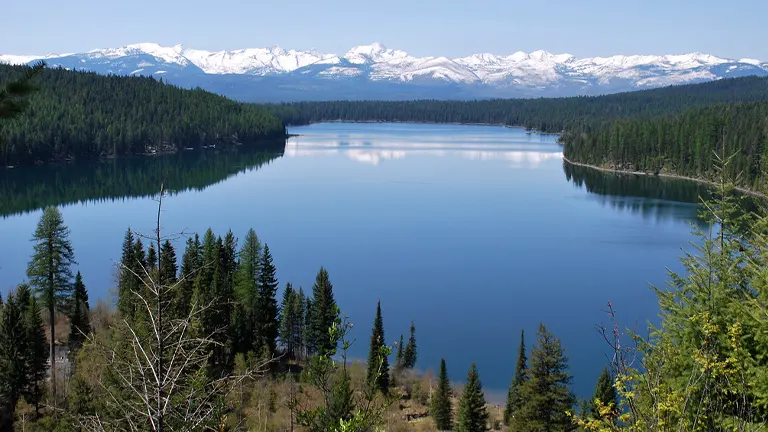
The unique ecosystem of Flathead National Forest is a testament to the incredible diversity and resilience of nature in Northwestern Montana. Spanning a range of elevations and climates, the forest encompasses a variety of habitats, from dense cedar-hemlock forests and lush riparian zones to rugged alpine tundra and open grasslands. This diversity supports a rich tapestry of life, including over a thousand plant species, hundreds of wildlife species, and an impressive array of fish and bird species. The forest is particularly noted for its role as a critical habitat for threatened and endangered species, such as the grizzly bear, Canada lynx, and bull trout, highlighting its importance in regional and global biodiversity conservation efforts. The intricate web of life within Flathead National Forest is maintained through natural processes like fire, which regenerate forests and maintain healthy ecosystems, and through the pristine waters of its rivers and lakes that provide essential resources for both aquatic and terrestrial species. This complex and vibrant ecosystem is not only a focus for scientific research but also a cherished space for outdoor recreation, offering a living classroom for all who visit and seek to understand the delicate balance of natural ecosystems.
Location of Flathead National Forest
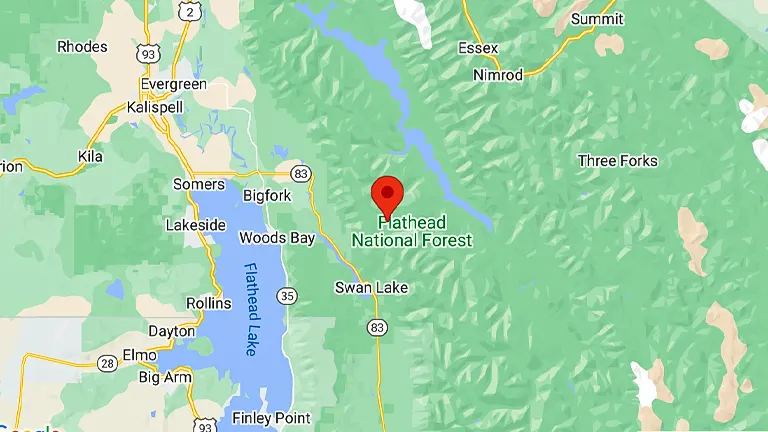
Flathead National Forest is located in the northwestern corner of Montana, United States, adjacent to the Canadian border and Glacier National Park. This sprawling natural landscape stretches across more than 2.4 million acres, encompassing parts of Flathead, Lincoln, and Powell counties. It is characterized by its stunning mountain ranges, part of the Rocky Mountains, and its close proximity to the Bob Marshall Wilderness Complex to the east. The forest’s diverse terrain includes vast forests, rugged mountain peaks, and numerous lakes and rivers, making it an accessible yet profoundly wild area. The main access points to the forest are near the towns of Kalispell, Whitefish, and Columbia Falls, providing gateways to the natural wonders within and serving as starting points for countless outdoor adventures in this breathtaking region of Montana.
Here are some specific guides on how to reach Flathead National Forest:
- By Air: The closest major airport is Glacier Park International Airport (FCA) in Kalispell, Montana. From the airport, rent a car and drive approximately 20 miles northeast on US Highway 2 to reach the western edge of the forest. This route offers scenic views and direct access to several forest entrances.
- By Car from Missoula: Drive north on US Highway 93 towards Kalispell, a journey of about 120 miles. This route takes you directly through the Flathead Valley and near the western boundary of Flathead National Forest. From Kalispell, you can easily access various parts of the forest via US Highway 2 or Montana Highway 35.
- By Car from Great Falls: Take US Highway 89 north to Browning, then merge onto US Highway 2 west towards West Glacier. This route, approximately 200 miles, offers a panoramic drive through the Montana landscape and leads directly to the southern entrances of Glacier National Park and the adjacent Flathead National Forest.
- By Train: Amtrak’s Empire Builder line stops in West Glacier, Essex, and Whitefish, all of which are convenient entry points to Flathead National Forest. The train offers a unique and scenic approach to the forest, ideal for those who prefer not to drive. From these stops, car rentals or local shuttle services can be used to explore the forest.
- By Recreational Vehicle (RV) or Camper: For those traveling by RV or camper, US Highway 2 runs along the southern boundary of the forest and offers numerous RV-friendly campgrounds and access points. This highway is well-maintained and offers easy navigation through the region, making it a popular choice for road trippers.
- Hiking or Backpacking into the Forest: For the adventurous, several long-distance trails lead into Flathead National Forest from surrounding areas, including trails from Glacier National Park and the Great Bear Wilderness. Ensure you’re well-prepared with maps, supplies, and bear-aware practices before embarking on backcountry hikes.
- By Bicycle: Cycling enthusiasts can access Flathead National Forest via the Great Divide Mountain Bike Route, which skirts the eastern edge of the forest. This challenging route offers an unparalleled way to experience the natural beauty of the area up close. Be sure to plan for a safe and supported trip, especially in remote sections.
Conservation and Recreation in Flathead National Forest
Conservation and recreation in Flathead National Forest are intricately linked, emphasizing the balance between preserving natural resources and providing opportunities for public enjoyment. The forest’s management practices focus on protecting its diverse ecosystems, wildlife habitats, and cultural sites, while also accommodating a variety of recreational activities. Efforts such as controlled burns to maintain forest health, habitat restoration projects for endangered species, and sustainable timber harvesting demonstrate a commitment to conservation.
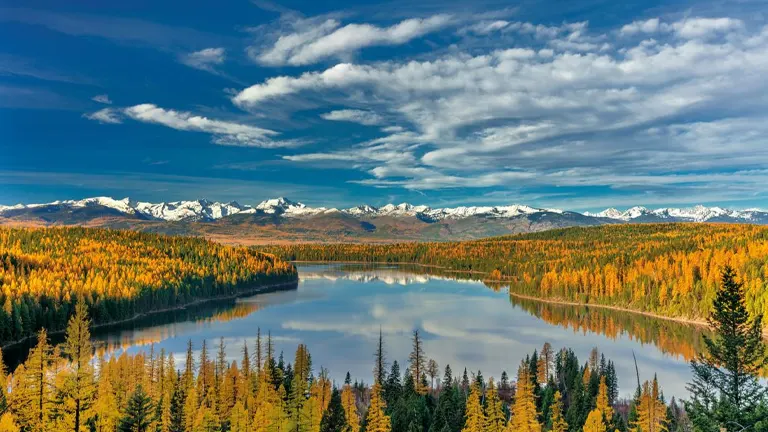
Simultaneously, the forest offers an array of recreational opportunities, from hiking and camping to fishing and skiing, designed to immerse visitors in its natural beauty without compromising ecological integrity. This dual approach ensures the Flathead National Forest remains a vibrant, accessible natural area for future generations, fostering a deep appreciation for the environment and the importance of conservation efforts.
Diverse Vegetation and Plant Species in Flathead National Forest
- Western Red Cedar (Thuja plicata): The Western Red Cedar thrives in the moist, lower elevation areas of the forest, forming dense, verdant stands. These towering trees are vital to the ecosystem, providing habitat and stability to the forest floor.
- Engelmann Spruce (Picea engelmannii): Found at higher elevations, Engelmann Spruce trees adapt well to the cooler, wetter conditions. They play a crucial role in the forest’s biodiversity, offering shelter and food for wildlife, as well as contributing to the forest’s scenic beauty.
- Lodgepole Pine (Pinus contorta): This versatile species is known for its ability to thrive after forest fires, playing a key role in the natural regeneration process. Lodgepole Pines dominate many areas of the forest, creating habitats for numerous birds and mammals.
- Huckleberry (Vaccinium): A favorite of both humans and wildlife, huckleberries are understory shrubs that produce delicious, nutritious berries. They are essential food sources for bears, birds, and other animals, and also hold cultural and economic importance in the region.
- Beargrass (Xerophyllum tenax): Beargrass, with its distinctive tall, white flowering stalks, is a signature plant of the Flathead region. It grows in both open and forested areas, particularly thriving in subalpine meadows, and is an important cultural symbol for Native American tribes.
- Ponderosa Pine (Pinus ponderosa): Characteristic of the forest’s dryer, lower elevations, Ponderosa Pines are easily recognizable by their thick, orange-brown bark. These trees are critical for wildlife, providing nesting sites for birds and habitat for many terrestrial species.
- Subalpine Fir (Abies lasiocarpa): This species is found in the moist, higher elevations of the forest, often forming pure stands. Subalpine Fir trees contribute to the forest’s complex ecosystem, offering dense cover and food for wildlife, and adding to the area’s stunning alpine beauty.
- Montana State Flower, Bitterroot (Lewisia rediviva): The Bitterroot is a resilient, low-growing plant that thrives in the rocky, well-drained soils of the forest’s montane and subalpine zones. Its beautiful pink flowers bloom in the spring and early summer, symbolizing the rugged beauty of Montana’s landscapes.
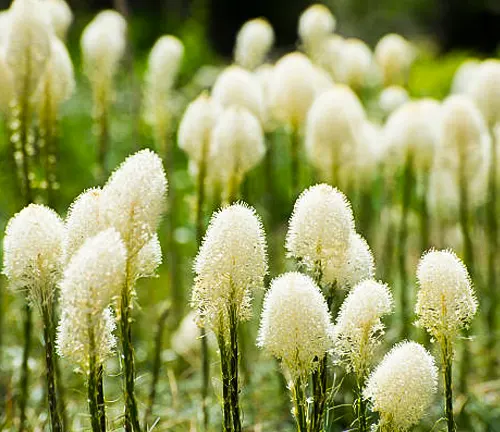
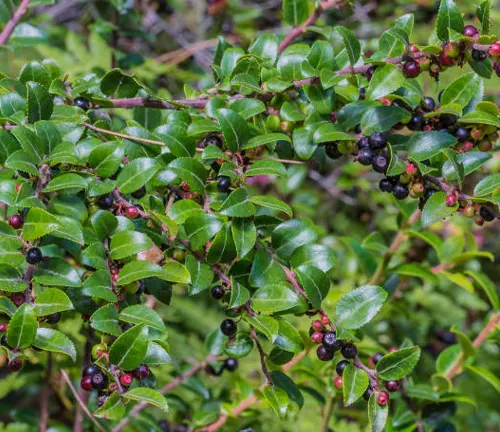
Fauna in Flathead National Forest
- Grizzly Bear (Ursus arctos horribilis): As one of North America’s most iconic species, the grizzly bear is a symbol of the wild, untamed nature of Flathead National Forest. These majestic creatures roam the vast wilderness areas, playing a critical role in the ecosystem as apex predators.
- Gray Wolf (Canis lupus): The presence of gray wolves in the forest is a testament to successful conservation efforts. These social predators are essential for maintaining the health of prey populations, contributing to the ecological balance.
- Bald Eagle (Haliaeetus leucocephalus): The bald eagle, America’s national bird, is often spotted soaring above the forest’s rivers and lakes. These majestic birds nest in tall trees near water bodies, fishing for trout and other small animals.
- Canada Lynx (Lynx canadensis): Adapted to the forest’s snowy environment, the Canada lynx is a rare sight, primarily due to its elusive nature. Their presence is indicative of a healthy, undisturbed forest ecosystem, especially in areas dense with their primary prey, the snowshoe hare (Lepus americanus).
- Westslope Cutthroat Trout (Oncorhynchus clarkii lewisi): Native to the cold, clear streams and lakes of the forest, the Westslope Cutthroat Trout is a vital species for both the ecological health of aquatic systems and recreational fishing.
- Mountain Goat (Oreamnos americanus): These agile climbers are often found on the steep, rocky cliffs of the forest’s higher elevations. Mountain goats are known for their thick white coats and distinctive curved horns, adapting well to the rugged mountainous terrain.
- Elk (Cervus canadensis): Large herds of elk are a common sight in the open meadows and forested valleys of Flathead National Forest. These herbivores are a key species for predator populations and play a significant role in the ecosystem by influencing the structure and composition of vegetation.
- Pileated Woodpecker (Dryocopus pileatus): As one of the largest woodpecker species in North America, the pileated woodpecker is easily recognizable by its striking red crest and black body. These birds play a crucial role in the forest ecosystem by helping control insect populations and creating nesting cavities for other species.
- American Beaver (Castor canadensis): Beavers are known as ecosystem engineers, significantly impacting their environment by building dams and creating wetlands. These activities can enhance biodiversity and improve water quality in the forest.
- Moose (Alces alces): The largest member of the deer family, moose are often found near water sources in the forest, feeding on aquatic plants in summer. Their presence is indicative of healthy riparian zones and wetland areas.
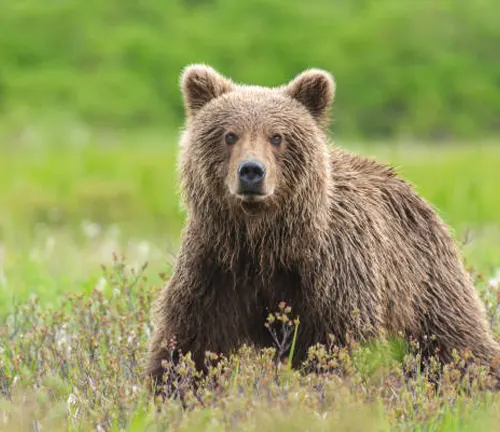
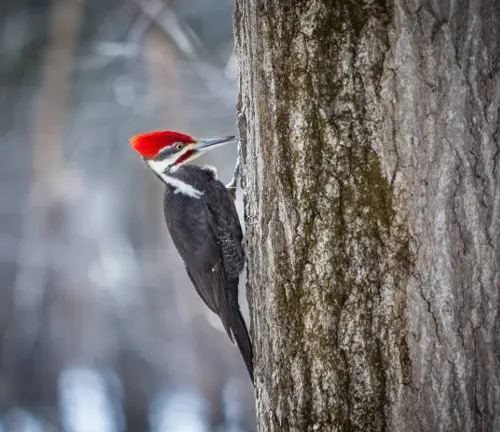
Attractions in Flathead National Forest

Glacier View Mountain: Glacier View Mountain offers one of the most accessible yet breathtaking vistas of Glacier National Park and the vast wilderness beyond. The trail to the summit is a favorite among hikers for its panoramic views that encompass the rugged peaks of the Rocky Mountains and the sprawling valleys below. Ideal for a day hike, this attraction provides an unforgettable experience of the area’s natural beauty, making it a must-visit for photographers and nature lovers alike.
Hungry Horse Dam and Reservoir: The Hungry Horse Dam, one of the largest concrete arch dams in the United States, creates the magnificent Hungry Horse Reservoir. The reservoir is a hub for recreational activities, including boating, fishing, and camping, with its 170 miles of shoreline offering ample space for exploration and relaxation. The dam itself is an engineering marvel, with tours available to learn about its history and role in flood control and power generation.
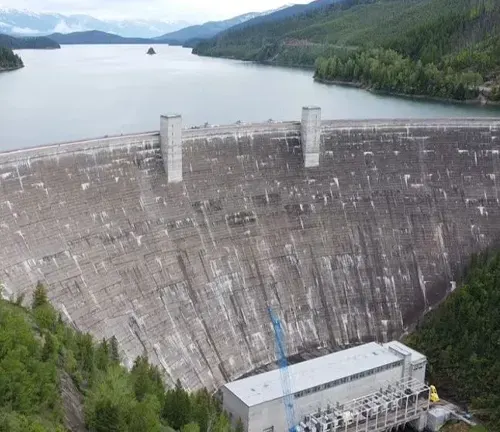
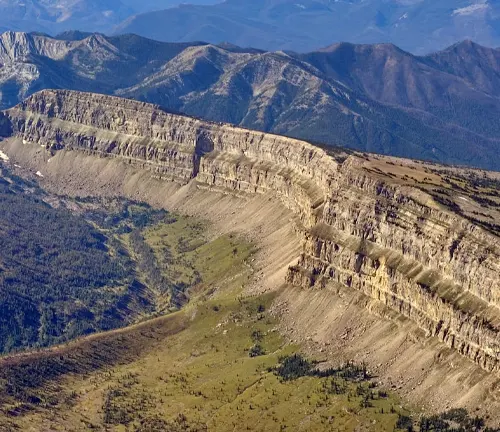
Bob Marshall Wilderness Complex: Adjacent to Flathead National Forest, the Bob Marshall Wilderness Complex, comprising The Bob Marshall, Scapegoat, and Great Bear Wilderness areas, is a gateway to one of the most pristine natural landscapes in America. Known to locals as “The Bob,” this wilderness offers unparalleled opportunities for backcountry hiking, horseback riding, and camping. The complex is famous for its rugged terrain, stunning landscapes, and the chance to experience true solitude and wilderness.
Jewel Basin Hiking Area: The Jewel Basin Hiking Area is dedicated exclusively to foot traffic, offering over 35 miles of trails that cater to all skill levels. This high mountain basin is renowned for its alpine meadows, sparkling lakes, and spectacular views of the Flathead Valley and Glacier National Park. Whether you’re up for a challenging hike to the top of Mount Aeneas or a leisurely stroll around Birch Lake, Jewel Basin is a paradise for hikers.
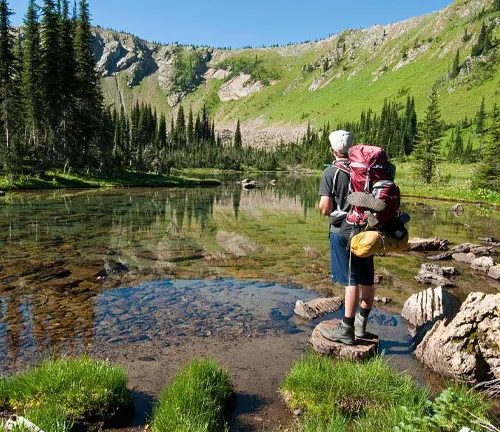
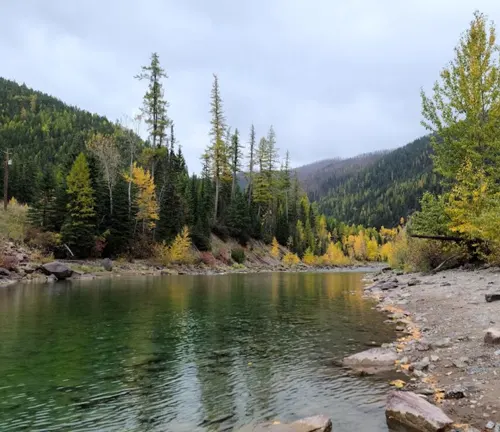
Swan Lake: Located within the forest, Swan Lake is a serene destination known for its crystal-clear waters and peaceful surroundings. It’s an ideal spot for kayaking, paddleboarding, and fishing, with the lush forest and towering mountains providing a stunning backdrop. The lake’s campgrounds and picnic areas make it a perfect place for a family outing or a quiet retreat into nature.
Great Bear Wilderness: Bordering Flathead National Forest, the Great Bear Wilderness is a rugged expanse of untouched nature. It’s home to a diverse array of wildlife, including grizzly bears, wolverines, and mountain goats. With over 300 miles of trails, visitors can delve deep into the wilderness to find cascading waterfalls, hidden lakes, and ancient forests. This area is a testament to the wild beauty of Montana and a sanctuary for those seeking adventure.
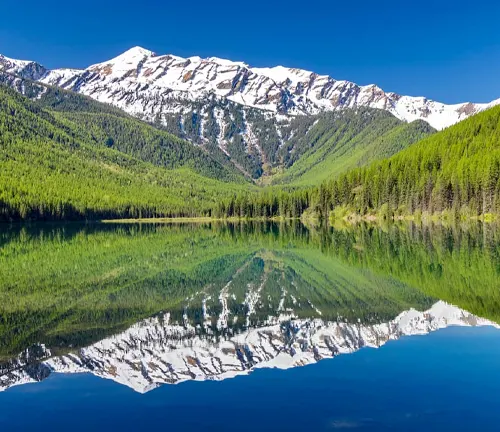
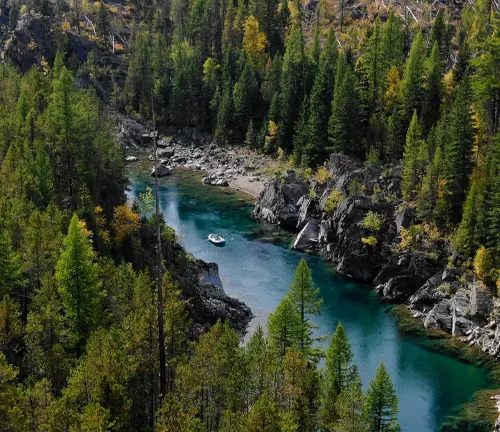
Flathead River System: The Flathead River System, comprising the North, South, and Middle Forks of the Flathead River, offers some of the finest whitewater rafting and fishing experiences in Montana. The rivers flow through stunning canyons and lush valleys, providing a lifeline for the forest’s ecosystems. Whether you’re looking for a thrilling rafting adventure or a tranquil spot for fly fishing, the Flathead River System has something for everyone.
Recreational Activities in Flathead National Forest
- Hiking: With over 2,800 miles of trails, Flathead National Forest caters to hikers of every skill level, from serene nature walks to challenging mountain treks. Trails like the Highline, the Swan Range, and the Continental Divide offer diverse landscapes, including alpine meadows, dense forests, and rugged peaks. Hiking in this forest not only provides physical exercise but also offers the chance to experience the tranquility and beauty of untouched nature.
- Fishing: The numerous lakes, rivers, and streams within the forest are a haven for anglers seeking trout, pike, and bass. Whether fly fishing in the clear, cold waters of the Flathead River or casting from the shores of Hidden Lake, anglers can enjoy not only the sport but also the stunning natural backdrop. The forest’s commitment to conservation ensures a healthy aquatic ecosystem, providing high-quality fishing experiences.
- Camping: Offering everything from developed campgrounds with amenities to primitive backcountry sites, camping in Flathead National Forest is an ideal way to immerse oneself in nature. Campsites provide access to spectacular views, wildlife watching opportunities, and a night sky filled with stars. Whether you’re in a tent beside a babbling creek or in an RV near an expansive lake, camping connects you directly with the forest’s natural wonders.
- Mountain Biking: The forest features a variety of trails suitable for mountain biking, offering everything from gentle rides through open meadows to challenging climbs over rocky terrain. Trails such as the Whitefish Trail and the Foys to Blacktail Trail cater to bikers looking for adventure and scenic beauty. Biking in the forest allows for a unique exploration of its diverse ecosystems at a faster pace than hiking.
- Wildlife Watching: Flathead National Forest is home to an array of wildlife, from grizzly bears and wolves to bald eagles and lynx. Wildlife watching, whether through binoculars on a quiet morning or by chance during a hike, provides an incredible opportunity to observe these animals in their natural habitats. The forest’s vast wilderness areas offer some of the best wildlife viewing opportunities in the region.
- Skiing and Snowshoeing: During the winter months, the forest transforms into a snowy wonderland, offering opportunities for cross-country skiing and snowshoeing. Trails like the Big Mountain near Whitefish provide groomed paths for Nordic skiing, while the backcountry areas offer untouched snow for those seeking solitude and adventure. These winter sports allow visitors to experience the quiet beauty of the forest blanketed in snow.
- Boating and Kayaking: The lakes and rivers of Flathead National Forest provide perfect settings for boating and kayaking. Exploring the waters of Hungry Horse Reservoir or paddling along the North Fork of the Flathead River offers a peaceful way to enjoy the forest’s scenic beauty from a different perspective. These activities not only offer relaxation and exercise but also access to remote areas of the forest not easily reached by land.
- Horseback Riding: Horseback riding trails wind through much of the forest, offering a traditional and exhilarating way to explore the vast wilderness. Riding through open meadows or along mountain trails provides a unique connection to the land and its history, echoing the experiences of early explorers and settlers in the region.
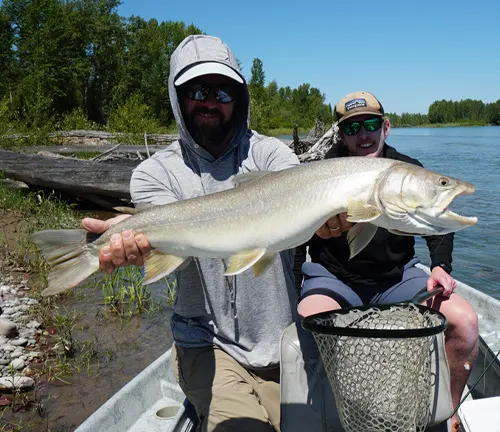
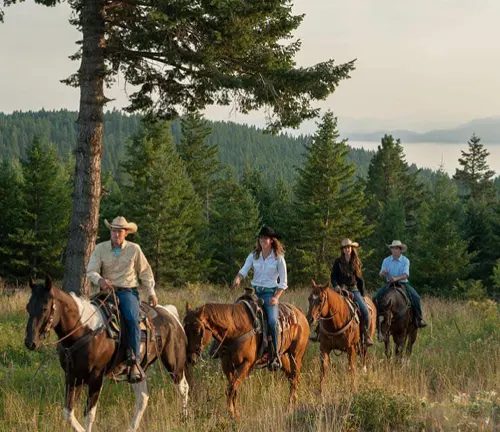
Different Facilities and Amenities in Flathead National Forest
- Developed Campgrounds: Flathead National Forest offers a variety of developed campgrounds equipped with amenities such as picnic tables, fire rings, potable water, and restroom facilities. These campgrounds provide a comfortable outdoor experience for families, groups, and solo travelers. Locations like Big Creek Campground and Tally Lake Campground are perfect for those seeking the convenience of established sites within the beauty of the national forest.
- Backcountry Campsites: For those seeking a more secluded and primitive camping experience, the forest offers designated backcountry sites. These areas require visitors to hike in, carrying their own gear and supplies, and often have minimal amenities, emphasizing Leave No Trace principles. This type of camping allows for a deeper connection with the wilderness and a true sense of adventure.
- Picnic Areas: Scenic picnic areas are scattered throughout the forest, offering families and groups the perfect spots for day outings. These areas are equipped with tables and sometimes grills, set against the backdrop of the forest’s natural beauty. Locations like the Swan Lake Day Use Area provide a relaxing setting for a meal outdoors.
- Hiking Trails: The forest boasts an extensive network of hiking trails, ranging from easy nature walks to challenging backcountry treks. Trailheads are well-marked, and many offer parking areas and information kiosks with maps and trail descriptions. These trails, such as the Danny On Memorial Trail, are gateways to exploring the diverse ecosystems and breathtaking landscapes of the forest.
- Visitor Centers: Visitor centers, such as the Hungry Horse Ranger District Office, provide invaluable resources for planning your visit. These centers offer maps, brochures, and exhibits on the forest’s history, wildlife, and conservation efforts. Staff are available to provide recommendations, safety tips, and current condition reports, making them a great first stop for visitors.
- Boat Launches and Fishing Access Sites: The lakes and rivers within Flathead National Forest are accessible through numerous boat launches and fishing access sites. These facilities cater to anglers and boaters, providing easy access to water activities. Sites like the Blankenship Bridge Fishing Access provide ramps for boats and tranquil spots for riverside fishing.
- Wildlife Viewing Areas: Specific areas and platforms are designated for wildlife viewing, allowing visitors to safely observe animals in their natural habitat. These spots are strategically located to offer the best chances of seeing wildlife while minimizing human impact on the animals’ natural behaviors.
- Interpretive Sites and Trails: The forest features several interpretive sites and trails that offer educational insights into the area’s natural history, ecology, and cultural heritage. These sites, such as the Going-to-the-Sun Road in the adjacent Glacier National Park, provide interpretive signage and guided tour opportunities to enhance visitor understanding and appreciation of the forest’s significance.
- Winter Sports Areas: During the winter months, designated areas within the forest are transformed into havens for snow sports. Cross-country skiing, snowshoeing, and snowmobiling trails are maintained, offering outdoor enthusiasts the chance to explore the winter wonderland that the forest becomes. Areas like the Whitefish Mountain Resort on Big Mountain provide groomed trails and facilities for a variety of winter activities.
Tips and Advice for Visiting Flathead National Forest
- Plan Ahead and Prepare: Before venturing into Flathead National Forest, research the area you plan to visit. Check the weather forecast, trail conditions, and any potential wildlife alerts. Understanding the specifics of your chosen activities and the amenities available will ensure a safer and more enjoyable experience. Websites, visitor centers, and local ranger stations are valuable resources for current information.
- Respect Wildlife: The forest is home to a diverse array of wildlife, including grizzly bears, wolves, and elk. Always observe wildlife from a safe distance, and never feed or attempt to approach animals. Properly storing food and trash is essential to avoid attracting wildlife to your campsite. Carrying bear spray and knowing how to use it can provide an extra layer of safety in bear country.
- Leave No Trace: Embrace the Leave No Trace principles to minimize your impact on the environment. This includes packing out all your trash, staying on designated trails to protect undergrowth and soil, and camping at least 200 feet from lakes and streams to protect aquatic ecosystems. Leave what you find, such as rocks and plants, for others to enjoy.
- Be Prepared for Changing Weather: Weather in the Rocky Mountains can be unpredictable, with sudden storms, temperature drops, and snow at high elevations, even in summer. Dress in layers, and always carry waterproof gear and extra food and water. Being prepared will help you stay comfortable and safe regardless of the weather conditions.
- Practice Safe Fire Use: If you plan to make a campfire, use established fire rings, and never leave a fire unattended. Check fire restrictions in the area, as they can change based on weather conditions and seasons. Always fully extinguish your fire before leaving, using water and stirring ashes to ensure no embers remain.
- Stay on Designated Trails: Sticking to marked trails and areas helps protect the fragile ecosystems of Flathead National Forest. Off-trail hiking can cause erosion and damage to vegetation. Trails are designed not only for visitor safety but also to minimize human impact on the forest’s natural habitats.
- Respect Other Visitors: Share the trails and facilities with respect and courtesy. Keep noise levels down to maintain the natural peace of the forest and allow others to enjoy their experience. Yield to other trail users where appropriate, and maintain a safe and respectful distance from other groups.
- Be Aware of Local Regulations: Familiarize yourself with the forest’s regulations regarding camping, fire use, pets, and wildlife interaction. Rules and regulations are in place to protect both the visitors and the natural environment. Information on regulations is available at visitor centers and the forest’s official website.
- Participate in Guided Tours and Ranger Programs: Take advantage of educational programs and guided tours offered within the forest. These programs provide deeper insights into the forest’s ecology, wildlife, and conservation efforts, enriching your visit with valuable knowledge and experiences.
Recommendation
For an unforgettable experience, don’t miss the chance to hike to the summit of Mount Larson. The challenging trek is rewarded with panoramic views that encapsulate the essence of Jackson National Forest’s rugged beauty.
Conclusion
In conclusion, Flathead National Forest is a natural treasure that boasts a stunning mosaic of lush forests, diverse wildlife, and clear waterways. It serves as a critical habitat for a variety of species and offers a plethora of recreational activities, from fishing to hiking, ensuring that its pristine beauty and ecological significance are preserved for future generations to appreciate and explore. Its conservation is not only crucial for maintaining biodiversity but also for sustaining the cultural and recreational heritage that defines the region.
FAQs
- What is the best time of year to visit Flathead National Forest?
The best time to visit depends on the activities you’re interested in. Summer (June to August) is ideal for hiking, camping, and water activities, offering warm weather and accessible trails. For winter sports like skiing and snowshoeing, December to February is the best period. Early fall (September to October) is also beautiful, with fewer crowds and vibrant autumn foliage. - Are permits required for hiking or camping in the forest?
Most day hikes do not require permits, but overnight stays in designated wilderness areas within the forest may require a free permit. It’s best to check with a local ranger station or the forest’s official website for specific regulations and permit requirements for your planned activities. - Can I bring my dog to Flathead National Forest?
Yes, dogs are allowed in Flathead National Forest but must be kept on a leash in developed areas and under voice control in backcountry areas. Always practice good pet etiquette, including packing out waste and keeping pets away from wildlife. - What kind of wildlife might I see in the forest?
The forest is home to a wide range of wildlife, including grizzly bears, black bears, elk, deer, moose, wolves, lynx, bald eagles, and numerous other bird species. Wildlife sightings are more common in the early morning and late evening. - Are there any restrictions on campfires?
Restrictions on campfires vary depending on the time of year and current fire danger levels. Always check current conditions and regulations before lighting a fire. Use established fire rings in designated areas, and never leave a fire unattended. - What should I do if I encounter a bear?
If you encounter a bear, do not run. Speak calmly and firmly, make yourself look as large as possible, and slowly back away. If you have bear spray, know how to use it. Always store food and scented items in bear-proof containers when camping. - Is backcountry camping allowed, and what are the rules?
Backcountry camping is allowed, but campers must follow Leave No Trace principles to minimize their impact. This includes camping at least 200 feet from water sources, trails, and other campers, packing out all trash, and burying human waste properly. Some areas may require a permit for overnight stays. - What facilities are available in Flathead National Forest?
The forest offers a range of facilities, including developed campgrounds, picnic areas, boat launches, visitor centers, and restrooms. Facilities vary by location, so it’s advisable to research the specific area you plan to visit for detailed information on available amenities.
Flathead National Forest stands as a testament to nature’s majesty, offering endless adventures and serene beauty. A visit here is a journey into the heart of the wilderness, where every trail, lake, and mountain vista tells its own story of the wild. Let this breathtaking landscape be your escape, a place where memories are made, and the spirit of adventure is alive.

Benjamin Brooks
Forestry AuthorGreetings! I'm Benjamin Brooks, and my journey over the past 15 years has revolved around the fascinating realms of content creation, expertise in snow clearing, and the intricate world of lumberjacking and landscaping. What began as a simple curiosity about the natural world and heavy machinery has evolved into a passionate profession where my love for crafting words intertwines seamlessly with my lumberjacking and garden skills.

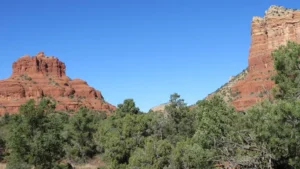
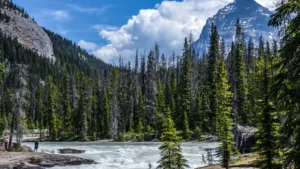

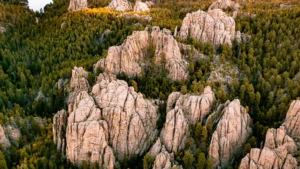
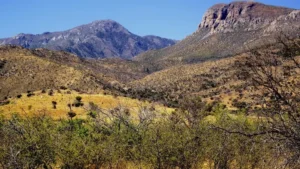
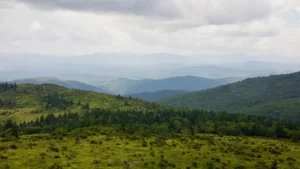
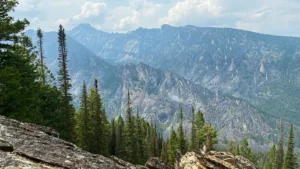
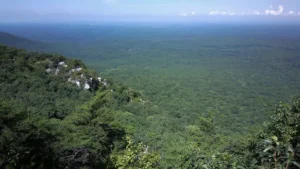

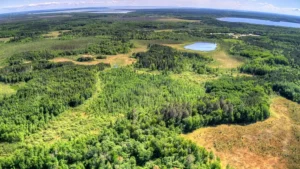
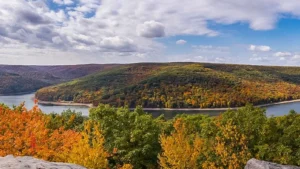
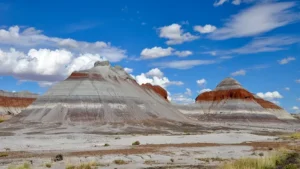
Leave your comment